National Trust to build solar panels at Orford Ness, Suffolk
- Published
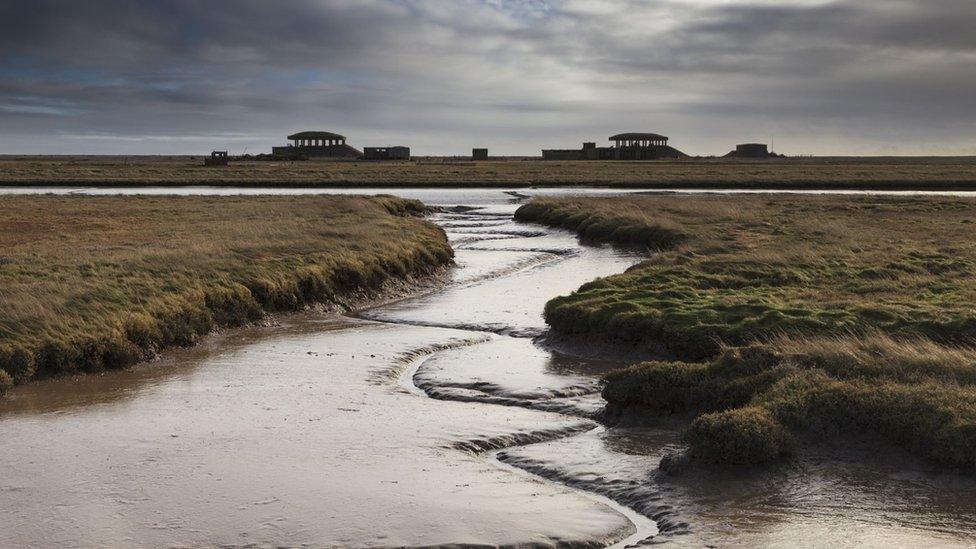
Orford Ness in Suffolk has relied on an off-grid diesel generators to provide power to the island
A former nuclear weapons testing site that is now a coastal nature reserve has had solar panels installed to help end its reliance on oil.
Orford Ness, a vegetated shingle spit in Suffolk, was used as a secret military test site during the Cold War.
It was sold to the National Trust, external in 1993.
The spit was disconnected from the National Grid in 2013 following a storm surge and became mostly reliant on diesel-powered generators.
The trust said the new solar panels aimed to reduce oil usage by up to 65% and generate 50% of the power used at the site's buildings.
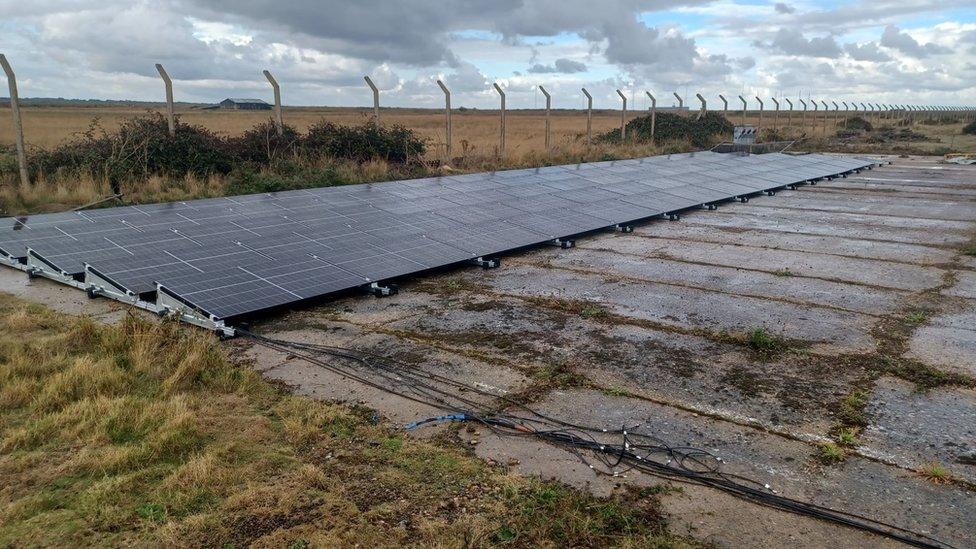
Solar panels will enable the island to cut its oil usage by 65%, says the National Trust
The spit runs 10 miles in parallel to the mainland from Aldeburgh to the mouth of the River Ore.
Some 76 photovoltaic panels would be installed with each panel producing about 395W.
The trust said it estimated they would provide about 25,000 kWh each year and save approximately 10,000 litres of diesel and 10 tonnes of carbon dioxide emissions.
Energy would be stored in a battery and controlled by smart technology.
A small, but new and much more efficient diesel generator would be used for any additional power required, the trust said.
"This new system will be very much welcomed by the team here, providing a much more reliable system for our power," said Glen Pearce, operations manager at Orford Ness.
"As an internationally important nature reserve, it's also great to be able to see a reduction of diesel use on site and contributing to the National Trust's carbon reduction targets."
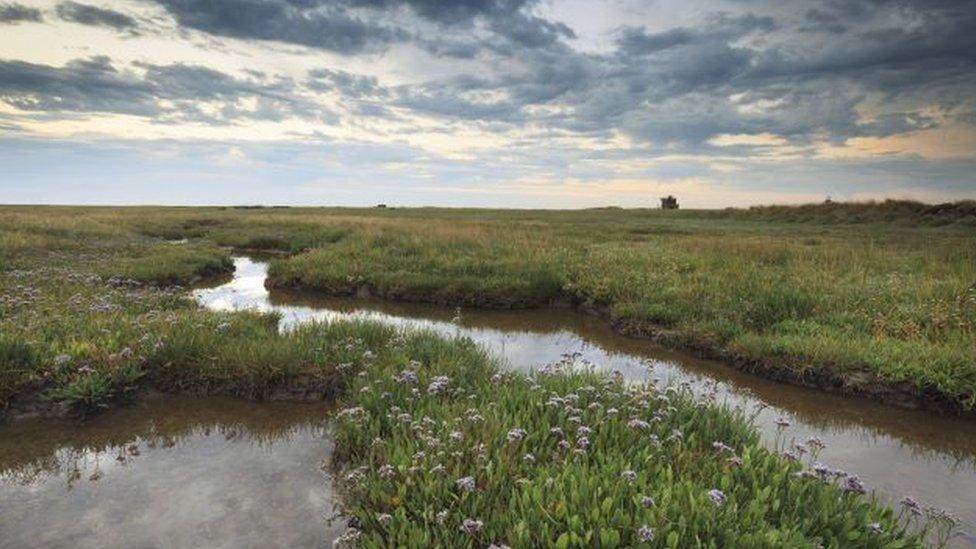
The spit is now a nature reserve run by the National Trust although the public can still visit the former test site buildings
The sensitive nature of the site meant the need to work with the landscape.
"With the many habitats, the fragile vegetated shingle and unexploded ordnance on the site, we were limited as to where we could put the photovoltaic panels," the trust said.
A "no dig" method has been used and the panels are weighted to the ground using ballast.

Orford Ness is a vegetated shingle spit and the National Trust provides access to it from the quay at Orford village
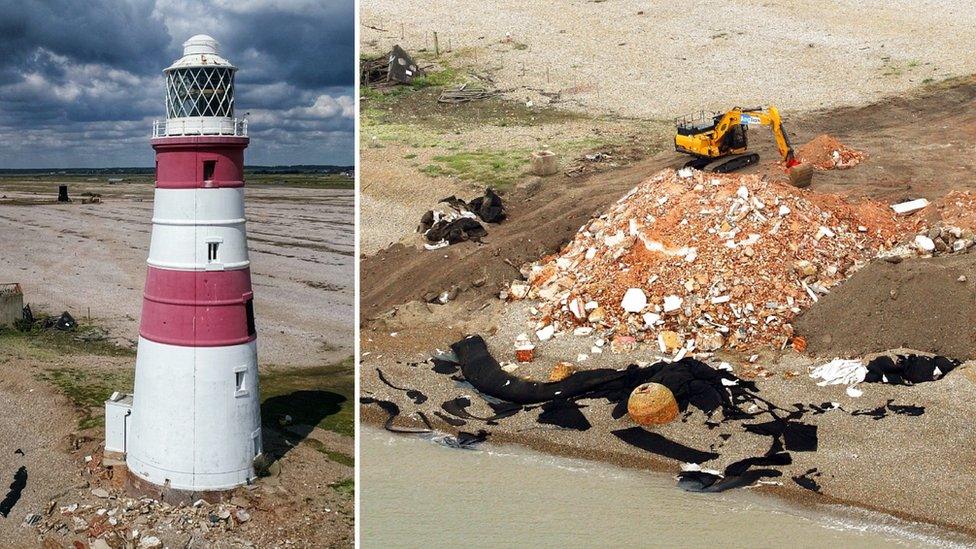
Orfordness Lighthouse was threatened by erosion and dismantled in 2020

Find BBC News: East of England on Facebook, external, Instagram, external and Twitter, external. If you have a story suggestion email eastofenglandnews@bbc.co.uk
Related topics
- Published17 March 2022
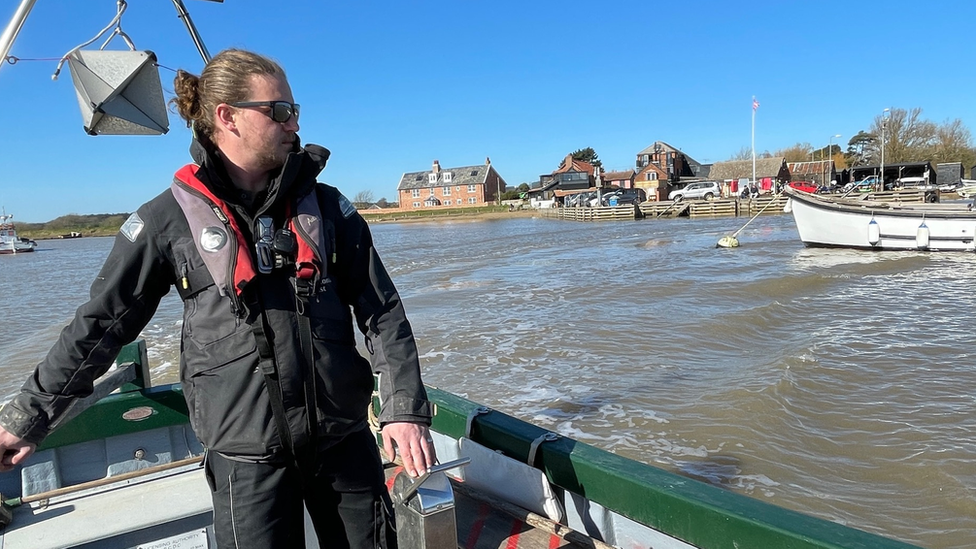
- Published5 May 2022

- Published7 April 2021
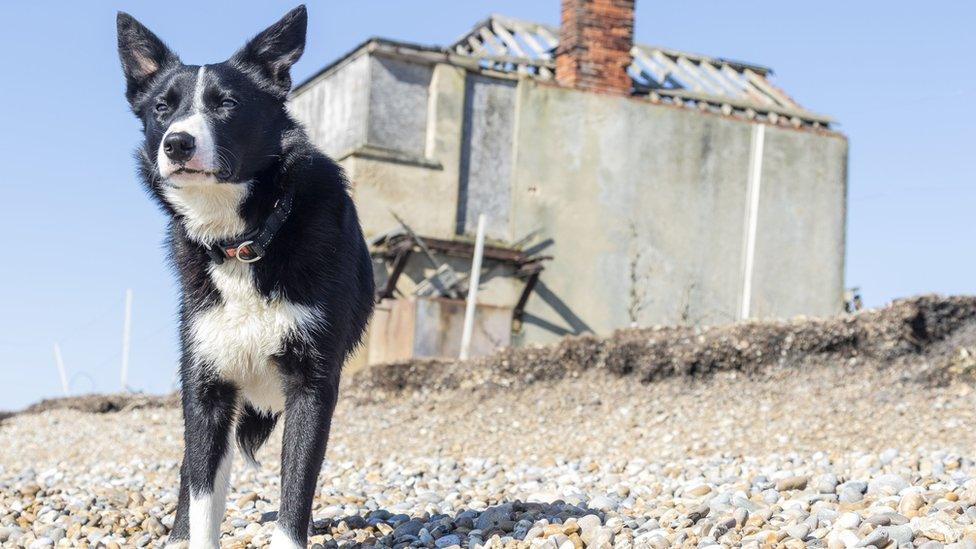
- Published11 August 2020
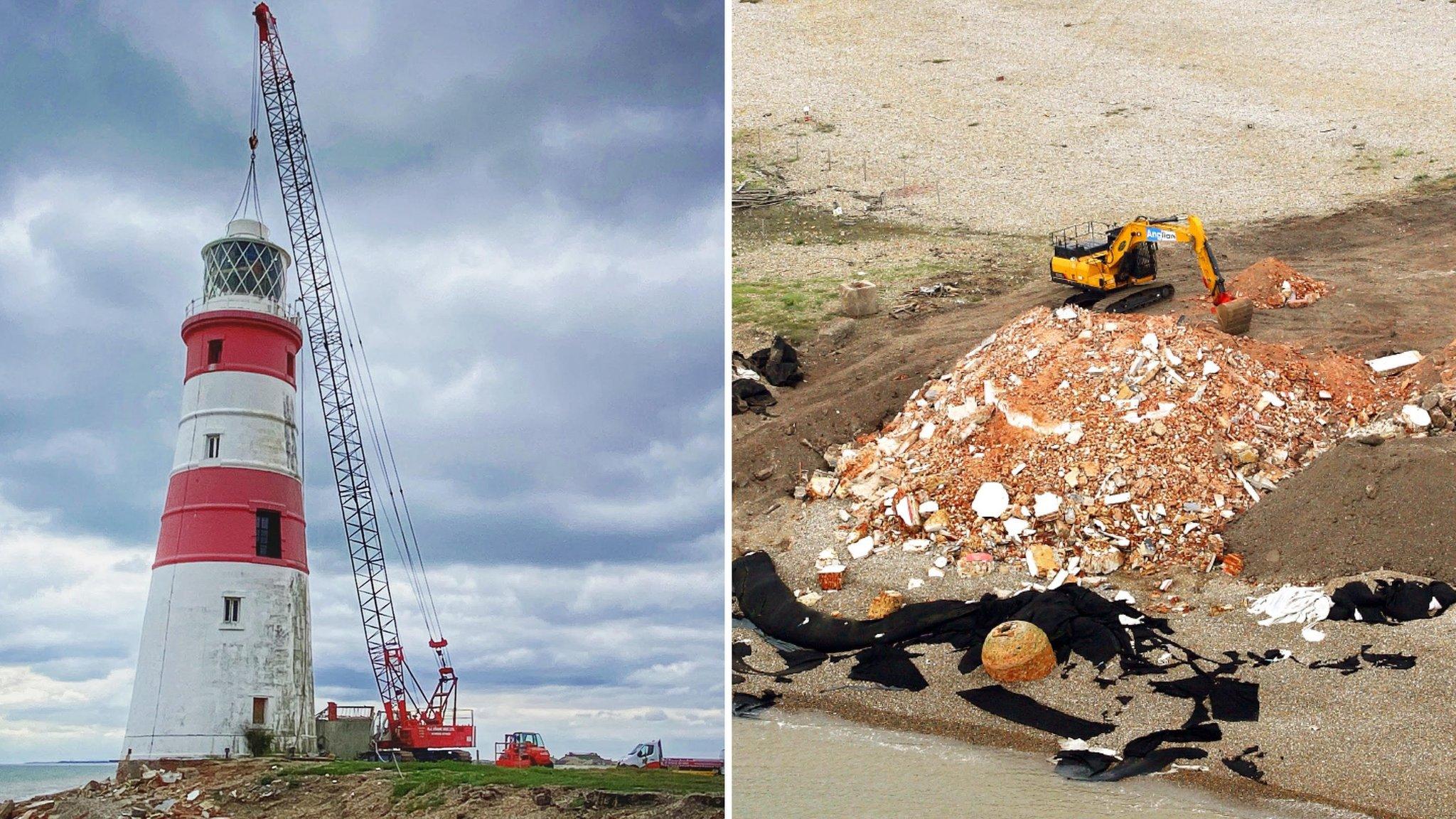
- Published27 April 2013
